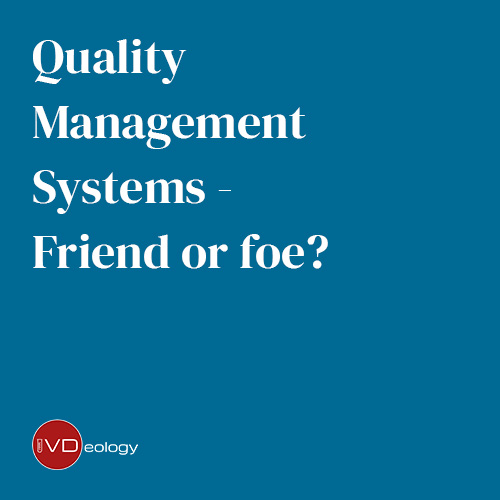
Quality Management System – three words that bring dread to people new to the industry and in my experience to some people who have been in the industry for years. In the almost 20 years I have worked in the industry I have worked on both sides – the side trying to circumnavigate round the Quality management system (QMS) and the side trying to ensure that it is followed and maintained. But what is it and more importantly why is it needed?
A QMS is defined as a formalised system that documents processes, procedures, and responsibilities for achieving quality policies and objectives. Sounds complicated but what does that really mean?
A QMS is the way you document what you do and how you do it. It identifies the activities required to meet both your customer and regulatory requirements. It includes the documentation that controls the manufacture and release of your product, the controls in place to ensure materials you buy conform to the specification you require, the training completed to allow people to do the job correctly, the instructions on what to do if something goes wrong, how you control updates to documents, to name but a few.
For IVD’s, the industry standard is ISO13485:2016, where manufacturers can achieve a certificate of conformity from a notified body. Certification is an easy way of demonstrating to your customers your commitment to quality and that you have the required controls in place to manufacture a reliable, safe and effective product. However, whilst this is highly recommended, it is not mandatory. Annex I of the IVD Directive states that the manufacturer must reduce risks as far as possible or take adequate protection measures in relation to risks that cannot be eliminated. It is therefore vital that to ensure that you have procedures for controlling the highest risk activities in your manufacturing process.
However, many QMS’s present artificial barriers to the company and therefore people spend an extraordinary amount of time trying to find ways to avoid following it. I have often wondered that if even some of this time had been spent trying to improve the process rather than finding new ingenious ways of trying to avoid it, how much better off the company would have been. It is therefore important that when building your QMS that you try to ensure that it aligns with the existing workflow so it works with the company rather than against it.
So other than a regulatory requirement that you must meet, what are the benefits of the QMS? It gives you a framework for controlling and ultimately improving your processes. It is the way you ensure that the final product is made right first time – helps to prevent mistakes, reduce discards and therefore lowering your production costs. It helps to ensure that you meet your customer requirements and that customer satisfaction is preserved. This helps build confidence in your company and ultimately leads to more sales both from new customers and returning ones.
So rather than consider the QMS as a tick box exercise to enable you to get on the market, if done correctly, a QMS would definitely be an asset to your company and not just a regulatory requirement.
Fiona Thompson – IVD Regulatory Specialist @ivdeology
For more information on how to implement a Quality Management System contact Fiona, or one of our team and find how we can help you [email protected].
